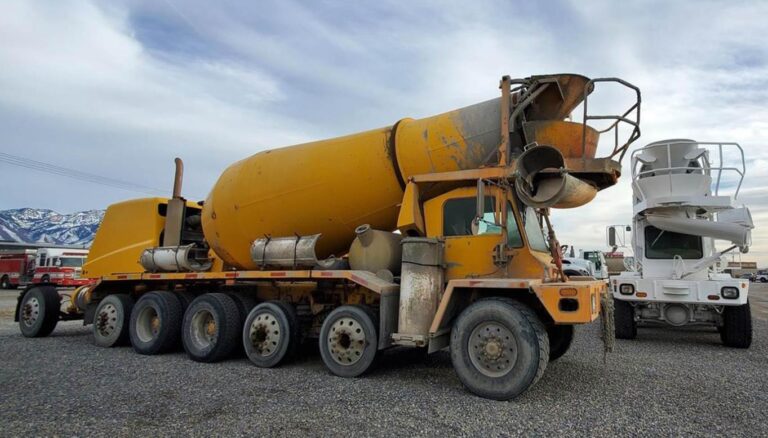How Do Oil Delivery Trucks Work? A Complete Breakdown
Are you looking for How Do Oil Delivery Trucks Work? Understanding the inner workings of oil delivery trucks is crucial in today’s logistics and transportation sector. These vehicles play a pivotal role in fuel distribution, ensuring timely and efficient delivery of oil to various destinations. This article delves into the mechanisms, technology, and processes that enable oil delivery trucks to function effectively.
Key Takeaways
- Understanding Components: Learn about the key components that make up an oil delivery truck.
- Loading and Unloading Process: Insights into how oil is loaded and unloaded from these trucks.
- Safety Measures: Explore the safety protocols and equipment in oil delivery trucks.
- Technological Advancements: Discover how technology has transformed oil truck operations.
- Environmental Considerations: Discussion on the environmental impact and measures taken.
How Do Oil Delivery Trucks Work?
Oil delivery trucks work by transporting oil from a supply point to various destinations using a specialized tank mounted on the truck chassis.
These trucks are equipped with a pumping system to load and unload oil, hoses for transferring the oil to and from storage tanks, and safety features like emergency shutoff systems and spill containment kits.

The process involves the truck arriving at a supply depot, where oil is pumped into its tank. Once at the delivery site, the oil is pumped out into the customer’s storage tank.
The truck’s operation is supported by safety protocols and advanced technology, such as GPS tracking and fleet management systems, to ensure efficient and safe oil delivery.
Components of an Oil Delivery Truck
Tank Structure and Materials
The heart of an oil delivery truck is its tank. Typically cylindrical, these tanks are made from high-strength materials like aluminum or stainless steel. They’re designed to withstand the pressures of transporting liquid cargo.
Pumping and Hose Systems
A crucial aspect of these trucks is the pumping system, which facilitates the loading and unloading of oil. Hoses are connected to storage tanks, allowing for the transfer of oil under controlled pressure.
The Loading and Unloading Process
Loading Procedure
The loading of oil into delivery trucks is a precise process. Trucks are connected to oil storage tanks, where pumps are used to transfer the oil into the truck’s tank.
Unloading and Delivery
At the destination, the unloading process involves reversing the pumping action. The oil is carefully delivered into the storage facilities, following strict safety and environmental protocols.
Safety Measures in Oil Delivery Trucks

Onboard Safety Equipment
Safety is paramount in oil transportation. Trucks are equipped with emergency shutoff systems, spill containment kits, and fire extinguishers to handle any potential hazards.
Operational Safety Protocols
Drivers and operators are trained in safety procedures, ensuring the safe handling of oil during transit and delivery.
Technological Advancements
GPS and Fleet Management
Modern oil delivery trucks are often equipped with GPS and fleet management systems. These technologies improve route planning and monitor vehicle performance for enhanced efficiency.
Automated Systems
Some trucks now feature automated loading and unloading systems, increasing accuracy and reducing the risk of spills.
Environmental Considerations
Reducing Emissions
Many oil delivery trucks are now designed to minimize emissions, aligning with global efforts to reduce environmental impact.
Spill Prevention Measures
Spill prevention is critical. Trucks are equipped with features like double-walled tanks and automatic shutoff valves to prevent leaks.
How Long Is The Hose On An Oil Delivery Truck?
The length of the hose on an oil delivery truck can vary, but typically, it ranges between 100 to 150 feet. This length allows for sufficient reach from the truck to the storage tank at the delivery site.

The hose needs to be long enough to ensure flexibility and convenience in various delivery situations, such as when the truck cannot park directly next to the storage tank due to space constraints or safety reasons.
The hoses are designed to be durable and strong, capable of handling the oil pressure and the wear and tear of regular use.
How Much Oil Does An Oil Delivery Truck Hold?
The capacity of an oil delivery truck depends on its size and design. On average, these trucks can hold between 2,000 to 4,000 gallons of oil. However, larger trucks can carry up to 11,600 gallons.

The design of the truck, including the number of compartments and the material of the tank, also plays a role in determining its capacity. Regulations regarding the maximum allowable weight on roads also influence the maximum capacity of these trucks, ensuring safe and efficient transportation of oil.
Do Oil Tanker Truck Drivers Ever Fill Up Their Truck With The Fuel Stored In The Tank?
It is highly uncommon and generally not permissible for oil tanker truck drivers to use the fuel stored in their tanks for personal use or to fuel the truck itself.
The oil in the tank is typically the property of the company or client who has purchased it, and using it for personal or truck fuel would be considered unauthorized use or theft.
Additionally, most oil delivery trucks are designed to transport specific types of oil, which may not be suitable as fuel for the truck itself. Oil tanker truck drivers usually refuel their trucks at designated fuel stations.
Conclusion
Oil delivery trucks are a cornerstone in the oil distribution network. Their sophisticated design, combined with advanced safety and environmental features, make them an essential component in the energy sector.
So, How Do Oil Delivery Trucks Work? By understanding their components, loading and unloading processes, and the technology that drives them, we gain insight into their critical role in our modern world.
People Also Ask
What measures are taken to prevent oil spills during delivery?
Trucks are equipped with spill-prevention technologies like automatic shutoff valves and double-walled tanks. Drivers also follow strict protocols during loading and unloading to minimize spill risks.
How do weather conditions affect oil delivery truck operations?
Extreme weather can impact delivery schedules and routes. Trucks are equipped to handle various conditions, but safety remains the top priority, sometimes leading to delayed deliveries in severe weather.
What training do oil delivery truck drivers receive?
Drivers receive specialized training in handling hazardous materials, safety protocols, emergency response, and efficient driving techniques to ensure safe and efficient deliveries.
Can oil delivery trucks transport different types of oil?
Yes, some trucks are designed with multiple compartments, allowing them to carry different types of oil simultaneously, each isolated to prevent cross-contamination.

Welcome to the exhilarating world of Matt Rex, a professional car racer turned renowned vehicle enthusiast. Immerse yourself in his captivating blog as he shares heart-pounding adventures, expert reviews, and valuable insights on cars, trucks, jets, and more. Fuel your passion for speed and discover the beauty of vehicles through Matt’s engaging stories and meticulous expertise. Join the ever-growing community of enthusiasts who find inspiration and expert advice in Matt Rex’s blog—a digital hub where the thrill of speed meets the pursuit of knowledge.







